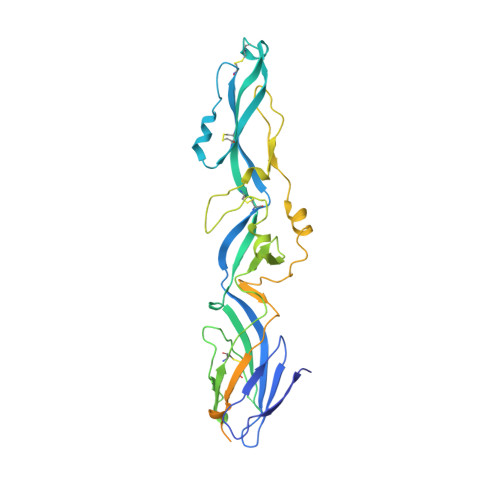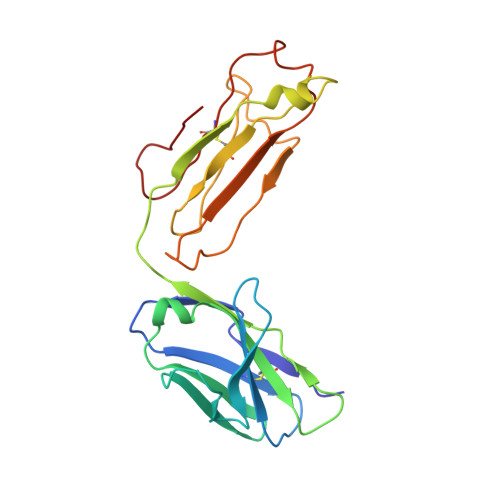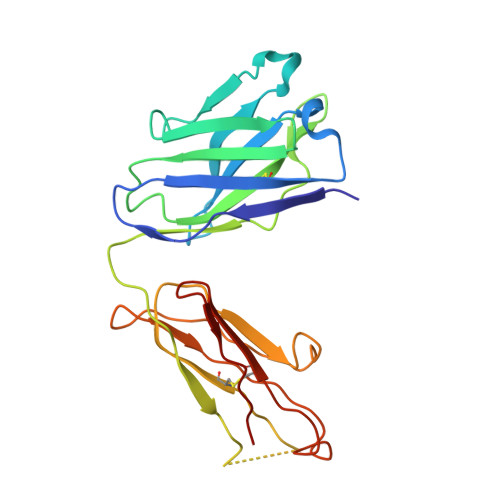Structural basis for the preferential recognition of immature flaviviruses by a fusion-loop antibody.
Cherrier, M.V., Kaufmann, B., Nybakken, G.E., Lok, S.M., Warren, J.T., Chen, B.R., Nelson, C.A., Kostyuchenko, V.A., Holdaway, H.A., Chipman, P.R., Kuhn, R.J., Diamond, M.S., Rossmann, M.G., Fremont, D.H.(2009) EMBO J 28: 3269-3276
- PubMed: 19713934
- DOI: https://doi.org/10.1038/emboj.2009.245
- Primary Citation of Related Structures:
3I50, 3IXX, 3IXY - PubMed Abstract:
Flaviviruses are a group of human pathogens causing severe encephalitic or hemorrhagic diseases that include West Nile, dengue and yellow fever viruses. Here, using X-ray crystallography we have defined the structure of the flavivirus cross-reactive antibody E53 that engages the highly conserved fusion loop of the West Nile virus envelope glycoprotein. Using cryo-electron microscopy, we also determined that E53 Fab binds preferentially to spikes in noninfectious, immature flavivirions but is unable to bind significantly to mature virions, consistent with the limited solvent exposure of the epitope. We conclude that the neutralizing impact of E53 and likely similar fusion-loop-specific antibodies depends on its binding to the frequently observed immature component of flavivirus particles. Our results elucidate how fusion-loop antibodies, which comprise a significant fraction of the humoral response against flaviviruses, can function to control infection without appreciably recognizing mature virions. As these highly cross-reactive antibodies are often weakly neutralizing they also may contribute to antibody-dependent enhancement and flavi virus pathogenesis thereby complicating development of safe and effective vaccines.
Organizational Affiliation:
Department of Biological Sciences, Purdue University, West Lafayette, IN 47907-2054, USA.
















